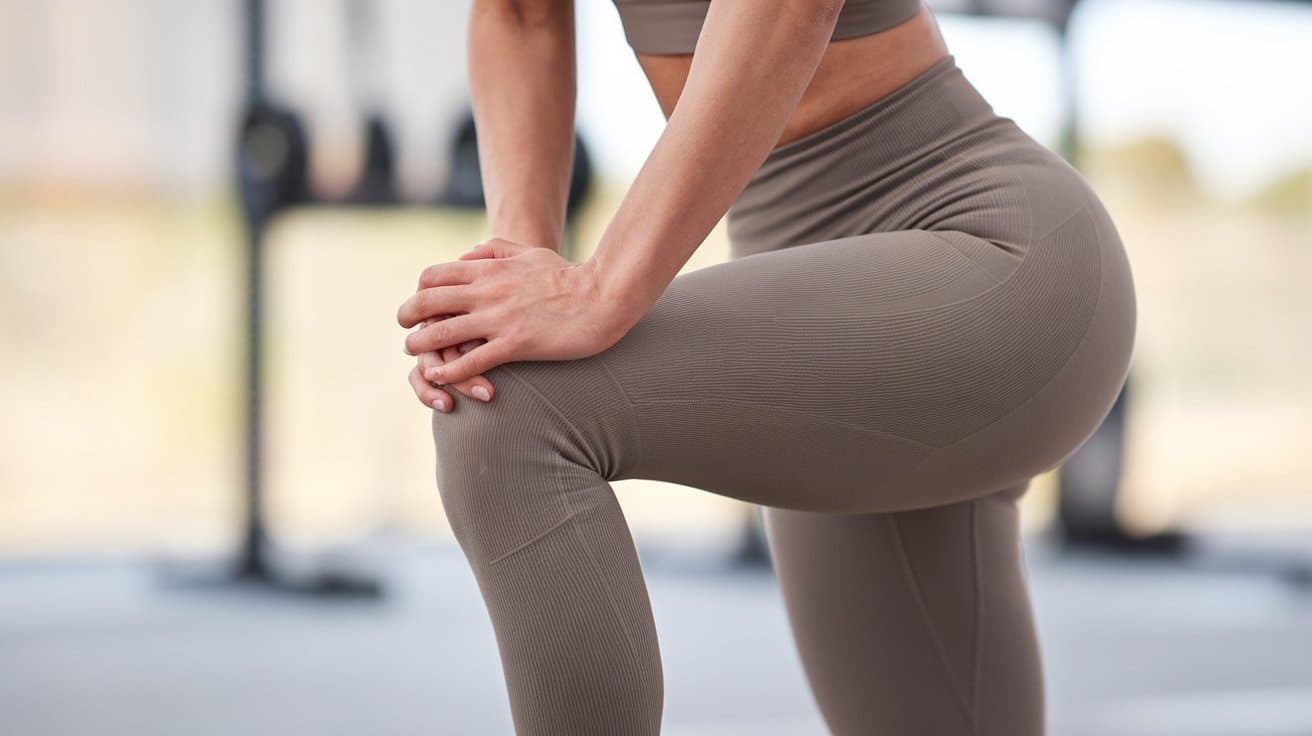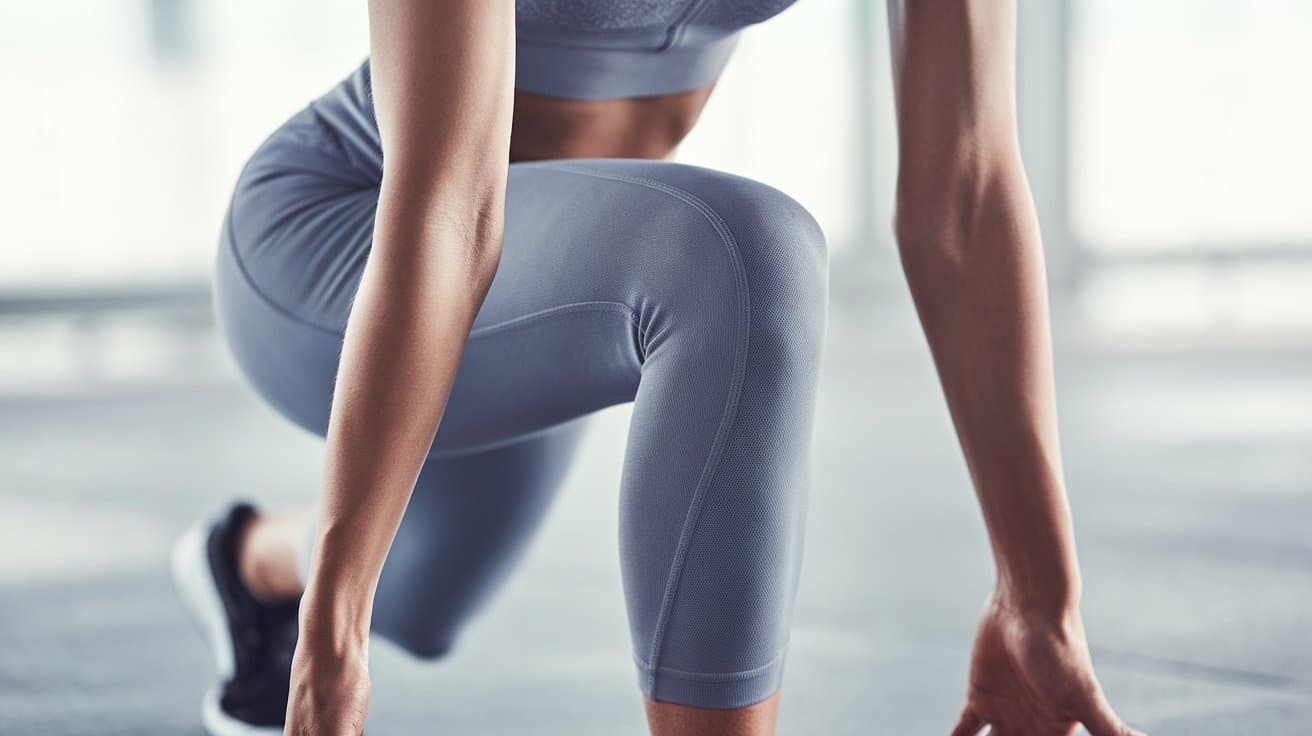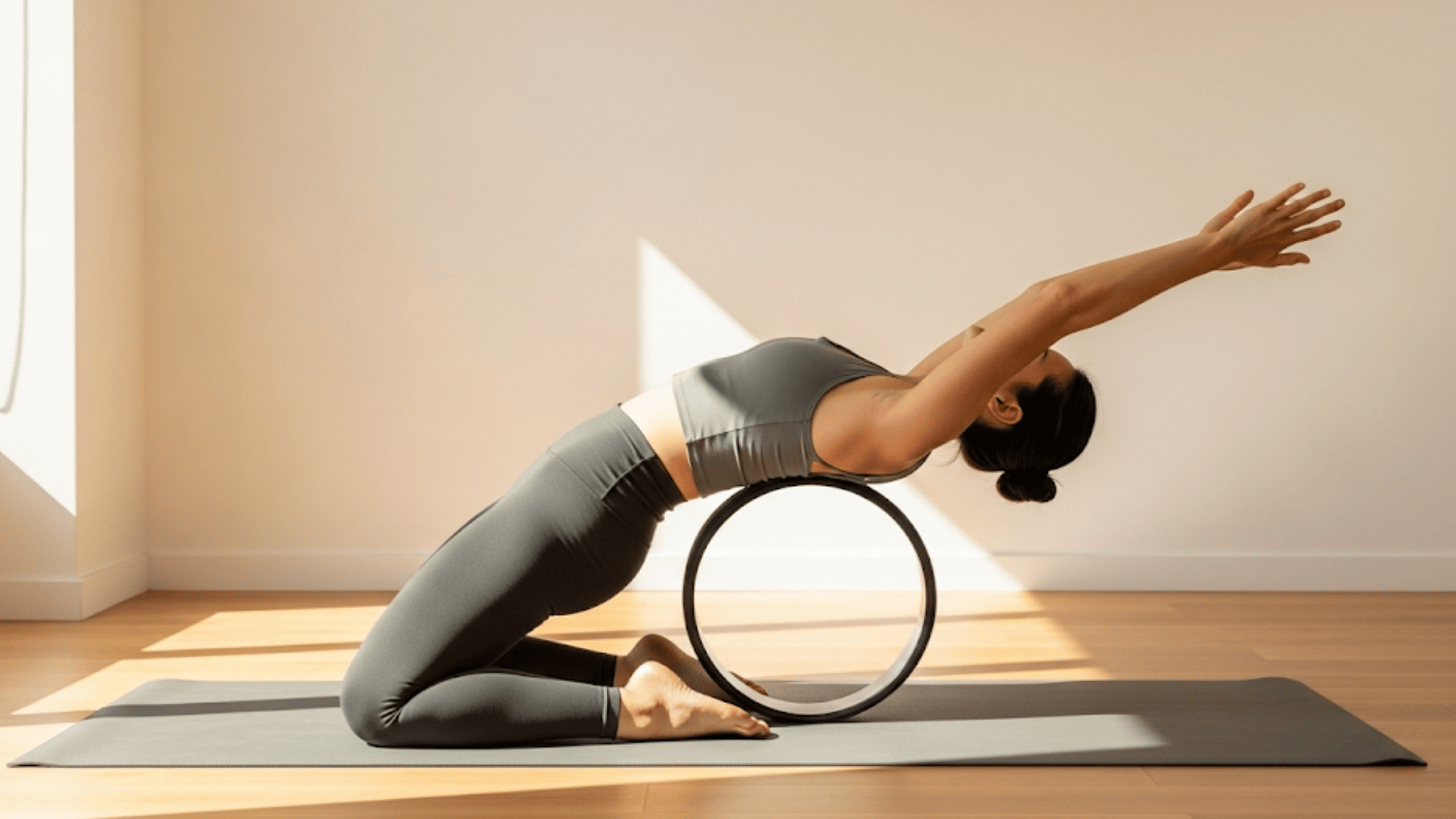Do you skip lunges because you worry they might hurt your knees?
Many fitness enthusiasts avoid this effective exercise due to concerns about knee pain and injury, especially those with arthritic knees who wonder if lunges are worse than squats.
The truth is, lunges themselves aren’t the problem – poor technique and common mistakes are the real culprits behind knee discomfort.
This guide will show you exactly how to perform lunges safely while protecting your knees. You’ll learn proper form techniques, find why some people experience pain, and knee-friendly variations that work for everyone.
We’ll also cover when to avoid lunges completely and share expert tips for pain-free training. By the end, you’ll know how to make lunges a safe, effective part of your workout routine without fear of knee problems.
Do Lunges Cause Knee Pain?
The short answer is no, lunges are not inherently bad for your knees. This popular exercise gets blamed for knee pain, but the real issue lies in how people perform it.
Myth vs. Reality: Lunges and Knee Health
Myth: Lunges damage knee joints and should be avoided.
Reality: When performed correctly, lunges strengthen muscles around the knee and improve joint stability. Many trainers and physical therapists recommend lunges as safe, effective lower-body exercises for healthy knees.
The fear surrounding lunges comes from poor form or pre-existing knee issues, making the exercise uncomfortable. However, for most people with healthy knees, lunging builds supportive leg and glute muscles that stabilize the knee joint.
People with arthritic knees often ask if lunges are safer than squats – both exercises can be beneficial when performed correctly, but individual tolerance varies. Rather than avoiding lunges entirely, focus on proper technique and listen to your body’s signals.
Why Some People Experience Knee Pain During Lunges?
While lunges aren’t bad for knees, certain factors can cause discomfort. Understanding these issues helps you avoid them and lunge safely.
1. Poor Form and Alignment
The wrong technique places abnormal stress on the knee joints. When your stance is too narrow or short, your front knee travels past your toes, putting extra pressure on the kneecap.
Letting the knee collapse inward strains the ligaments and meniscus. Poor mechanics like knees too far forward, caving inward, or twisting will make your knees hurt.
2. Muscle Imbalances
Lunges require balanced strength in quads, glutes, and other leg muscles. Weak glutes or hips prevent proper knee tracking.
Weak gluteus medius muscles fail to stabilize the hip and knee, causing inward buckling during lunges. Overly strong quadriceps combined with weak glutes create improper movement patterns and knee pain.
3. Limited Mobility
Stiff ankles or hips force knees to compensate. Lack of ankle flexibility causes your heel to lift and your knee to lurch forward, increasing pressure under the kneecap.
Tight hip flexors or other restricted joints alter your lunge pattern, making knees take on more strain.
4. Pre-existing Conditions
Existing knee injuries, arthritis, or tendonitis might be irritated by lunges. People with patellofemoral pain or IT band syndrome might find standard lunges uncomfortable.
Those with knee osteoarthritis should be particularly careful, as certain exercises can worsen joint deterioration. Individual knee conditions may require modifications or alternative exercises rather than traditional lunges.
For arthritic knees, focusing on what is the best exercise for osteoarthritis of the knee often involves low-impact, controlled movements that don’t stress inflamed joints excessively.
How to Do a Lunge without Hurting Your Knees?
Using the correct technique activates the glutes while reducing knee stress. Follow these essential steps:
Step 1: Foot Position Setup
Start with toes pointed outward before stepping. This preset position activates your glute muscles and reduces quad dominance. Point your stepping foot outward rather than straight ahead for better glute engagement and knee protection.
Step 2: Knee Tracking
Push your knee outward as you lunge down, keeping it aligned over your foot. Your knee should track toward the outside of your foot, not inward.
Maintain this outward knee position throughout the entire movement – no inward wobbling or collapsing allowed.
Step 3: Glute Activation
Focus on firing your butt muscles rather than relying on quad strength. You should feel your glutes working more than your front thigh muscles.
Keep forcing your glute muscles to engage by maintaining the toe-out, knee-out position consistently.
Step 4: Movement Pattern
Whether doing forward, reverse, or walking lunges, always combine toe-out positioning with outward knee tracking for optimal muscle recruitment.
The back leg provides balance while your front leg does the primary work through proper glute activation.
Step 5: Range Control
Start with partial lunges if experiencing discomfort, going only 25-50% of full depth while maintaining proper toe and knee positioning. Focus on quality movement patterns over depth to build strength safely and effectively.
Video Tutorial
Refer to this video by El Paso Manual Physical Therapy for a visual representation of doing lunges without hurting knees.
Common Mistakes That Cause Knee Pain
Avoid these frequent errors to keep your knees comfortable:
1. Knee too far forward:
Problem: Front knee shooting past toes due to short stance
Solution: Take a larger step and focus on sitting back into your hips
2. Knee caving inward:
Problem: Knees buckling inward due to weak hip stabilizers
Solution: Push knee out to stay in line with your foot; strengthen glutes.
3. Excessive forward lean:
Problem: Leaning torso too far forward shifts weight onto the knee
Solution: Keep chest up, shoulders back, and core engaged
4. Inactive core and glutes:
Problem: Slack core causes wobbling; inactive glutes overwork quads
Solution: Tighten abs and consciously squeeze front leg glute when rising
Knee-Friendly Lunge Variations and Alternatives
Different lunge styles create varying amounts of knee stress. Refer to these safer options:
| Lunge Variation | Knee-Friendliness | Key Benefits |
|---|---|---|
| Reverse Lunges | Most knee-friendly | Shifts weight to hips/glutes, reduces front knee load |
| Static Lunges | Very knee-friendly | No stepping motion, better form control |
| Partial Lunges | Moderate | Reduced range of motion, customizable depth |
| Assisted Lunges | Moderate | External support reduces knee loading |
| Forward Lunges | Least knee-friendly | Standard variation requires excellent form |
| Walking Lunges | Challenging | Advanced variation needs perfect technique |
| Jumping Lunges | Most challenging | High-impact, avoid with knee sensitivity |
Lunge Substitute Exercises for Sensitive Knees
If lunges don’t work for you, try these options that can serve as exercises that make osteoarthritis better:
1. Step-ups: Controlled knee motion with similar muscle targeting. Step onto a sturdy box or platform and step back down.
2. Box squats: Sit back onto the box or chair and stand up. Builds leg strength with less deep knee bending. Many wonder if squats are bad for arthritic knees – modified versions like box squats are often better tolerated.
3. Sumo squats: Wide-stance squats that emphasize hips and glutes rather than knees. These are generally gentler than regular squats for sensitive knees.
4. Glute bridges: Strengthen posterior muscles without any standing knee bend.
5. Cycling or swimming: Maintain leg fitness with low-impact cardiovascular options that help prevent knee arthritis from getting worse.
Expert Tips for Pain-Free Lunging
Follow these seven essential strategies:
- Always warm up first. Spend 5-10 minutes on brisk walking, light squats, or leg swings to prepare joints and muscles.
- Master form before progression. Practice basic lunges with perfect technique before adding weight or advanced variations.
- Strengthen supporting muscles. Build glutes, hamstrings, and hip stabilizers with targeted exercises like bridges and clamshells – this is how to prevent knee arthritis from getting worse.
- Improve ankle and hip mobility. Regular stretching of calves, hip flexors, and dynamic movements prevents compensation patterns.
- Consult trainers for form assessment or physical therapists for persistent knee issues.
Conclusion
Are lunges bad for knees? Absolutely not when performed correctly. The real problem lies in poor technique, muscle imbalances, and inadequate preparation, not the exercise itself. Proper lunge form actually strengthens muscles around your knee joint, improving stability and reducing injury risk.
The key is starting with correct alignment, progressing gradually, and choosing appropriate variations for your fitness level. Whether you opt for reverse lunges, static lunges, or alternative exercises, the goal remains the same: building strong, stable legs while protecting your knees.
This approach is effective when dealing with healthy knees or managing arthritic conditions. Remember that consistency with good form beats intensity with poor technique every time.
With patience, proper preparation, and attention to your body’s signals, lunges can become a valuable, knee-safe addition to your fitness routine that serves you well for years to come.
Frequently Asked Questions
How to Do a Lunge without Hurting Your Knees?
Keep your front knee above your ankle, distribute weight through your heel, maintain upright posture, and progress gradually with proper warm-up.
Who Should Avoid Lunges?
People with current knee injuries, severe osteoarthritis, acute knee pain, poor form ability, or those in post-surgery rehabilitation phases.
Are Lunges Safer than Squats?
Both can be safe when performed correctly. Individual tolerance varies, but lunges may allow better single-leg control while squats distribute weight evenly.










